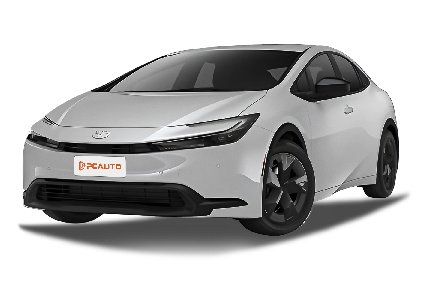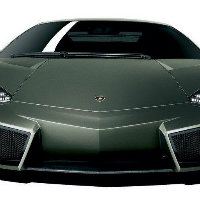Q
Where is Toyota Prius manufactured?
The Toyota Prius is mainly manufactured in Aichi Prefecture, Japan, at the Tsutsumi Plant and Fujimatsu factories. There is currently no public information indicating that Malaysia has a Toyota Prius manufacturing plant. In the past, the Toyota Prius was also produced at the Changchun plant in China and the Gateway factory in Chonburi Province, Thailand. However, production at the Changchun plant in China was discontinued in 2015.
Special Disclaimer: This content is published by users and does not represent the views or position of PCauto.
Related Q&A
Q
Can you jump a 2023 Prius?
Yes, the 2023 Toyota Prius can be jump-started to restore power. However, you need to pay attention to some key steps to ensure safety. This vehicle is equipped with a hybrid system. Its 12V auxiliary battery (usually located in the trunk or under the rear seats) is used to start the vehicle's electronic system, not the drive motor. When jump-starting, you first need to find the positive and negative terminals of the 12V battery (some models may have dedicated jump-start points). Use standard jump-start cables to connect to the battery of another vehicle or an external power source. Start the rescue vehicle and maintain its engine speed to charge the battery. Once the Prius dashboard is powered on, you can try to start the car. After the hybrid system starts, it will automatically charge the 12V battery. The hot and humid climate in Malaysia may accelerate battery aging. It is recommended to regularly check the battery status. If the battery frequently runs out of power, it may indicate that the battery life is coming to an end or there is a parasitic discharge problem in the vehicle, and timely maintenance is required. It's worth noting that the 12V battery capacity of hybrid models is usually smaller than that of traditional fuel-powered vehicles. Therefore, they are more susceptible to the impact of long-term parking or leaving the lights on. It is recommended that car owners carry a portable emergency power supply with them to handle unexpected situations.
Q
Is the Prius 2023 self-charging?
Yes, the 2023 Toyota Prius is a "self-charging" Hybrid Electric Vehicle (HEV). It charges its battery through the kinetic energy recovery system during vehicle operation and the engine running, without the need for an external power source to plug in. Specifically, the hybrid system of the Prius converts kinetic energy into electrical energy and stores it in the battery when braking or coasting. Meanwhile, the battery is also charged when the engine is running. Therefore, car owners don't need to charge the vehicle additionally like they do with Plug-in Hybrid Electric Vehicles (PHEVs) or Electric Vehicles (EVs). For users in Malaysia, this design of the Prius is very convenient because the local charging infrastructure may not be as well-developed as in some other countries. The self-charging hybrid vehicle can not only enjoy the energy-saving advantages of electric drive but also avoid the hassle of charging.
In addition, the 2023 Prius performs excellently in terms of fuel economy and emissions, making it very suitable for the urban road conditions in Malaysia, especially in the frequently congested driving environment. It should be noted that although the Prius is a self-charging hybrid vehicle, it cannot travel long distances solely on electricity like a pure electric vehicle. Its electric mode is mainly used for assisting driving and short-distance, low-speed driving.
Q
Do you have to charge the 2023 Prius?
The 2023 Toyota Prius, as a hybrid model, doesn't need to be externally charged like a pure electric vehicle when used in Malaysia. This is because it automatically charges the battery through the kinetic energy recovery system during vehicle operation and the engine's running. This design is highly suitable for Malaysia's driving environment, especially in congested urban traffic, where it can fully demonstrate its energy-saving advantages.
It's worth mentioning that the 2023 Prius actually offers a plug-in hybrid version (Prius Prime). If you choose this version, you need to externally charge it regularly to get a longer pure-electric driving range (about 70 kilometers). This is very practical for daily short-distance commuting and can further reduce fuel consumption.
The Malaysian government currently offers certain tax incentives for hybrid and electric vehicles. So, both the regular hybrid and plug-in hybrid versions are worth considering. Hybrid technology performs stably in tropical climates, and the battery cooling system has been optimized, making it suitable for Malaysia's hot and rainy climate conditions.
If you often drive long distances, the regular hybrid version will be more convenient. However, if you mainly drive in the city and have the conditions for home charging, the plug-in hybrid version will be a more economical and environmentally friendly choice.
Q
How big is the fuel tank on a 2023 Prius?
The fuel tank capacity of the 2023 Toyota Prius is approximately 43 liters. This design balances fuel economy while ensuring sufficient driving range, making it suitable for the daily commuting or long-distance driving needs of Malaysian users. As a representative of hybrid models, the Prius can significantly reduce fuel consumption through its efficient gasoline-electric collaborative system. With a 43-liter fuel tank, it can provide a driving range of about 800 to 900 kilometers under combined driving conditions, which is very suitable for the Malaysian consumer group that faces high oil prices and values environmental protection.
It's worth noting that the fuel tanks of hybrid models are usually smaller than those of pure gasoline vehicles because their electric systems share part of the power demand. Car owners can further optimize fuel consumption by reasonably using the EV all-electric mode. For users who often travel across states, it is recommended to plan the charging routes in combination with the Prius' energy monitoring system. Many shopping malls and gas stations in Malaysia are already equipped with charging facilities, which can fully leverage the energy-saving advantages of hybrid vehicles.
Q
How do I charge my 2023 Prius?
The 2023 Toyota Prius in Malaysia is mainly automatically charged through its hybrid system without the need for external charging. The battery will be automatically charged during driving through brake energy recovery and engine operation, so car owners don't need to take any additional actions. If you're driving the Prius Prime plug-in hybrid version, you can charge it via a household power source or a public charging station. When using household charging, make sure the voltage is stable and a dedicated charging cable is equipped. For public charging, it needs to be compatible with the Type 2 interface. It takes about 2 hours to charge the battery to 80%. It is recommended to regularly check the battery status to ensure its efficiency. Due to the hot climate in Malaysia, it's advisable to avoid long-term exposure to the sun to extend the battery life. Hybrid cars are more fuel-efficient when driving at low speeds in the city, which is suitable for the traffic conditions in Malaysia. For more details on charging, you can refer to the owner's manual or consult a Toyota-authorized service center.
Q
What type of gas does a 2023 Prius take?
The 2023 Toyota Prius in Malaysia is recommended to use RON95 unleaded gasoline. This is the fuel type officially recommended by Toyota for this model, which can ensure the efficient operation of the engine and take fuel economy into account. As a hybrid model, the Prius's Atkinson cycle engine has certain requirements for fuel quality. The octane number of RON95 is suitable for its compression ratio design. Meanwhile, RON95 is widely available at gas stations in Malaysia, making it very convenient to use. It's worth noting that although RON97 has a higher octane number, unless the vehicle specifically requires it, using RON97 won't bring any additional performance or fuel-saving advantages. Instead, it will increase the cost of vehicle use. Car owners in Malaysia also need to pay attention to choosing gas stations with a good reputation to ensure fuel quality and avoid engine carbon deposits or oxygen sensor damage caused by poor-quality gasoline. The maintenance of the battery pack of the hybrid system is also very important. Regular maintenance can extend the battery life. In addition, the hot and humid climate in Malaysia places high demands on the heat dissipation of the hybrid system. It is recommended that car owners regularly check the cooling system as required by the manual.
Q
Does the 2023 Prius have a solar roof?
The 2023 Toyota Prius does offer an optional solar roof configuration in some overseas markets. This technology can use the solar panels on the roof to provide auxiliary charging for the hybrid battery. Meanwhile, it supports powering in-vehicle electrical appliances when the car is parked. However, it should be noted that whether the version introduced in the Malaysian market is equipped with this function should be based on the local Toyota official configuration list.
Solar roof technology has been gradually applied in the new-energy vehicle field in recent years. In addition to Toyota, other brands such as Hyundai and Tesla have also introduced similar designs. Its actual performance is greatly affected by sunlight conditions. In a tropical country like Malaysia, it can theoretically play a better role, but the specific charging efficiency also depends on the area of the photovoltaic panels and the technical solution.
It is recommended that consumers interested in this technology can directly consult Malaysian Toyota dealers to obtain detailed local configurations. At the same time, they can also learn about the adaptation technologies of new-energy vehicles from other brands in tropical climates, such as battery cooling systems or high-temperature protection designs. All these can help better maintain electric and hybrid vehicles in Malaysia's hot and humid environment.
Q
Does a Prius 2023 have a transmission?
The 2023 Toyota Prius is indeed equipped with a transmission system. However, it uses Toyota's unique Electronic Continuously Variable Transmission (ECVT), which is fundamentally different from the mechanical gearboxes of traditional fuel-powered vehicles. The ECVT achieves power distribution through the coordinated operation of the electric motor and the planetary gear set. It doesn't have the fixed gears of a traditional gearbox, so the driving experience is smoother and more efficient. This design is one of the cores of hybrid vehicles, which can intelligently switch between electric-motor drive, engine drive, or hybrid drive modes according to driving conditions, significantly improving fuel economy.
For users in Malaysia, the Prius' ECVT system performs exceptionally well in congested urban roads. It not only reduces the jerks caused by frequent gear-shifting but also lowers fuel consumption through energy recovery. It should be noted that the key points for maintaining a hybrid vehicle lie in the battery pack and the electronic control system. It is recommended to have regular inspections at an authorized service center to ensure the long-term stable operation of the system. Compared with traditional gearboxes, the ECVT has a simpler structure and a lower failure rate. However, if any abnormalities occur, professional technicians with specialized equipment are still required for diagnosis. Other brands, such as Honda's hybrid models, also use similar technologies, but the specific implementation methods have their own characteristics.
Q
Is 2023 Prius AWD or FWD?
The 2023 Toyota Prius is available in two drivetrain versions in the Malaysian market: Front-Wheel Drive (FWD) and All-Wheel Drive (AWD). Consumers can choose according to their needs. The AWD version achieves four-wheel drive functionality through a rear-mounted motor, enhancing stability on slippery roads. On the other hand, the FWD version focuses more on fuel economy. Given Malaysia's rainy climate, the AWD system can improve driving safety in rainy weather. However, the FWD version, with its simple structure and lighter weight, is also highly efficient for daily city driving. As a hybrid model, the drivetrain choice of the Prius doesn't affect its low fuel consumption advantage. All models are equipped with a 2.0L hybrid system, with a significantly improved combined power output while maintaining the reliability that Toyota hybrids are known for. When Malaysian consumers are choosing a car, they can weigh the road conditions and their budgets. If they often encounter rough roads or travel in rainy days, the AWD version is more practical. If their driving is mainly for city commuting, the FWD version offers better cost - effectiveness. Additionally, the 2023 Prius has also been upgraded in terms of chassis and design, with a lower drag coefficient, more appealing handling, and a better - looking exterior, making it suitable for local users who value environmental protection and technology.
Q
Does the 2023 Prius have four doors?
In 2023, the Toyota Prius indeed features a four-door design, continuing its positioning as a practical hybrid family car. The five-seat layout and the structure that facilitates rear-seat passengers getting on and off are highly suitable for the daily use of Malaysian families or urban commuting. This fifth-generation model is built on the TNGA-C platform. The car body is lower and the wheelbase is longer. The opening angle of the rear door reaches 80 degrees, which is relatively large in its class, making it convenient to install child safety seats or carry items.
It's worth mentioning that the 2023 Prius offers two hybrid system options, 1.8L and 2.0L, in the Malaysian market. The 2.0L version has a combined power of up to 193 horsepower, being the most powerful performance version in all generations, while maintaining excellent fuel economy. The vehicle is also equipped with the latest Toyota Safety Sense system, including a pre-collision system and full-speed range adaptive cruise control, which is particularly suitable for the complex urban road conditions in Malaysia.
As the world's best-selling hybrid model, the battery stability of the Prius in tropical climates has also been specially optimized. Malaysian car owners don't need to worry about the impact of high temperatures on the hybrid system.
Latest Q&A
Q
how to reduce fuel consumption
If you want to cut down on fuel use, start with your driving habits. Avoid jackrabbit starts and sudden stops—stick to a steady speed instead. All that constant accelerating and braking guzzles gas, so when you're on the highway, cruise control is your best friend for maintaining a consistent pace.
Next, regular vehicle maintenance is a must. Swap out your air filter, spark plugs, and engine oil as scheduled to keep the engine running in top shape. Don't forget to check your tire pressure too—keep it at the manufacturer's recommended level. Underinflated tires create more rolling resistance, which means more fuel burned.
Also, lighten the load. Clean out that trunk—all the stuff you never use just adds weight. If you're not using roof racks, take them off. They create extra wind drag and add unnecessary heft, both of which hurt fuel economy.
In Malaysia's hot weather, AC is non-negotiable, but you can use it smarter. Don't crank the temperature way down; set it to a comfortable level. When parking, try to find a shaded spot or use a sunshade to keep the interior from turning into an oven. That way, the AC won't have to work as hard to cool things down.
Another fuel-saver: plan your routes to avoid peak traffic jams. Sitting idle or crawling along in stop-and-go traffic kills fuel efficiency.
If you're thinking about a new car, hybrid or fuel-efficient models are worth a look. The tech is pretty mature in Malaysia now, and they can save you big on fuel costs over time.
Lastly, use good-quality fuel and stick to the octane rating recommended by the manufacturer. It helps the engine run more efficiently.
Put all these tips together, and you'll not only slash your fuel bills but also help your car last longer.
Q
how to calculate fuel consumption per km malaysia
Figuring out your car's fuel consumption per kilometer in Malaysia is pretty straightforward. Here's how you do it: First, fill your tank right up until the pump auto - clicks off, and jot down your odometer reading. Then, drive around as you normally would for a bit. Once you're ready, fill it up again to the same auto - shutoff point. Note: how many liters you put in the second time and how many kilometers you've covered since the first fill. To get your fuel consumption in liters per 100 kilometers, just take the number of liters you added the second time, divide it by the kilometers driven, and then multiply that result by 100. If you want to know the cost per kilometer, take that liters/100km figure, multiply it by the current fuel price (like RM2.05 per liter for RON95), and then divide by 100.
Now, it's important to remember that fuel economy can take a big hit from a few key things. Your driving style is a big one – sudden acceleration and abrupt braking can guzzle up to 20% more fuel. Then there's the road conditions – traffic - jammed city streets will burn about 30% more gas than cruising down the highway. Running the air - conditioner at its maximum setting continuously can increase the engine load by approximately 10%. And don't forget about weight – every extra 100kg in the car can bump up fuel use by around 5%.
To keep things running as efficiently as possible, it's a good idea to check your tire pressure regularly – being 20% below the recommended pounds per square inch can increase fuel consumption by 3%. Also, make sure your air filter isn't clogged; a dirty one messes with combustion efficiency. On the tech side, some newer cars come with active grille shutters and auto start - stop systems, which can actually help cut fuel use by 5 - 8%. For the data geeks out there, you can hook up a fuel monitoring app to your car's OBD port to keep an eye on real - time consumption.
Q
how to calculate co2 emissions from fuel consumption
Figuring out how much CO₂ your fuel use pumps out is actually pretty straightforward with this simple formula: CO₂ emissions (in kilograms) = fuel consumption (in liters) × the fuel's CO₂ emission factor. Here in Malaysia, common gasoline like RON95 has an emission factor of roughly 2.3kg per liter, while diesel comes in a bit higher at around 2.7kg per liter. Let's put that into perspective – say your car burns 8 liters of RON95 to cover 100km; that means your CO₂ output is 8 × 2.3 = 18.4kg for that trip.
But fuel type isn't the only player here. Your driving habits and how well you maintain your car make a big difference too. Jackrabbit starts and slamming on the brakes? That's just wasting fuel and cranking up emissions. On the flip side, keeping your engine tuned up regularly and making sure your tires are properly inflated can boost fuel efficiency, which in turn cuts down on emissions.
The Malaysian government is also doing its part by promoting EEV (Energy Efficient Vehicle) policies and encouraging the adoption of hybrid or electric vehicles to reduce overall carbon emissions. Understanding all this not only helps you calculate your own emissions but also empowers you to drive more eco-consciously.
Q
how to improve fuel consumption
Malaysian car owners looking to boost fuel efficiency can start with their driving habits, vehicle maintenance, and daily usage details. First off, adopt a smooth driving style – skip the sudden acceleration and harsh braking. All that constant mashing of the gas and slamming on the brakes guzzles more fuel. On the highway, cruise control is your friend to keep a steady speed.
Next, regular vehicle maintenance is non-negotiable. Swap out the air filter, spark plugs, and engine oil as scheduled to keep the engine running at its peak. And don’t forget to check tire pressure – underinflated tires create more rolling resistance, which means higher fuel consumption.
Also, lighten the load. Clear out that trunk clutter you never use – the heavier the car, the more fuel it burns. With Malaysia’s scorching weather, use the AC wisely: roll down the windows at low speeds, but switch to AC on the highway to cut wind resistance.
Oh, and go for quality fuel – and avoid idling for ages. For those really serious about long-term fuel savings? Consider a hybrid or an eco-friendly model. They’re built with fuel efficiency tech that’s perfect for city driving.
Bottom line: tweak your driving habits and stay on top of maintenance, and you’ll see a real difference in fuel economy – plus, you’ll be doing your bit for the environment too.
Q
how to save fuel consumption
In Malaysia, saving fuel starts with three key areas: your driving habits, how you maintain your car, and smart use of technology. First off, drive smoothly—avoid jackrabbit starts and sudden braking. Make good use of cruise control on the highway, and try to keep your speed between 90-110 km/h. Going too fast or too slow both guzzle more fuel.
Next, regular car maintenance is a must. Keep your tires properly inflated, use low-viscosity engine oil, and clean or replace your air filter regularly. All these little things help your engine run more efficiently. Also, lighten the load—ditch the roof rack if you’re not using it (it adds wind resistance!), and for short trips, maybe carpool or take public transport instead.
If you’re really serious about cutting fuel costs, consider a hybrid or eco-friendly model. Their energy recovery systems can seriously slash fuel use. And let’s not forget Malaysia’s heat—AC is a must, but set it around 24°C and use sunshades to reduce the load. Oh, and fuel quality matters too—stick to reputable stations with the right octane rating for your car.
Looking ahead, electric vehicles might have a higher upfront cost, but charging is way cheaper than petrol. They’re definitely worth considering as a long-term fuel-saving option.
View MoreRelated News

Toyota Corolla Cross mid-term facelift in China, featuring a new front face and interior design
AshleySep 25, 2025

Toyota HiAce and Mitsubishi Outlander upgraded to receive five-star safety rating
WilliamSep 24, 2025

2026 Toyota GR Corolla launched in Japan, with improved cooling and body rigidity
Kevin WongSep 19, 2025

Detailed analysis of Toyota's different hybrid systems: THS, Hybrid MAX, i-FORCE MAX, PHEV, Multi-Stage HEV
Kevin WongSep 16, 2025

2026 Toyota Land Cruiser released in North America, offering the 1958 edition as a tribute to history
JohnSep 15, 2025
View More


















Pros
Cons